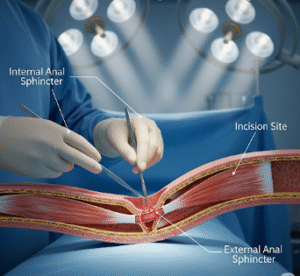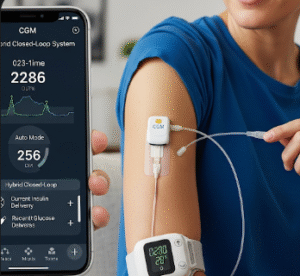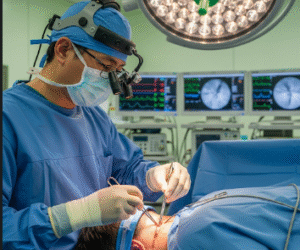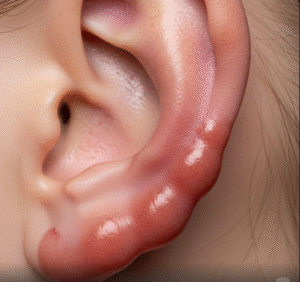Overview
Thigh pain refers to discomfort, aching, or sharp pain in the upper leg, which can arise from various musculoskeletal, neurological, or vascular conditions. The pain may be localized or radiate along the thigh and can affect mobility and daily activities. In Korea, modern diagnostic tools, including imaging and electrophysiological studies, combined with multidisciplinary treatment approaches, provide effective relief and management for both acute and chronic thigh pain.
What is Thigh Pain?
Thigh pain is a symptom rather than a disease, indicating underlying issues in muscles, nerves, joints, or blood vessels of the upper leg. It may manifest as a dull ache, burning sensation, stabbing pain, or cramping. Thigh pain can be acute—resulting from injury or trauma—or chronic due to degenerative, inflammatory, or systemic conditions. Understanding the cause is essential for proper treatment and prevention of complications.
Symptoms
Symptoms associated with thigh pain vary based on the underlying cause and severity:
- Dull, aching pain in the front, back, or sides of the thigh
- Sharp or stabbing pain during movement
- Tingling, numbness, or burning sensations if nerves are involved
- Swelling, bruising, or tenderness in case of trauma
- Muscle weakness or difficulty in walking
- Pain aggravated by standing, walking, or exercising
- Night pain or discomfort interfering with sleep in chronic cases
Causes
Thigh pain can arise from multiple sources, including:
- Muscle strain or tear: Often due to overuse, sports injuries, or sudden movements
- Nerve compression or injury: Sciatica or lumbar radiculopathy can cause radiating pain
- Hip or knee joint issues: Arthritis, bursitis, or labral tears can refer pain to the thigh
- Blood clots (Deep Vein Thrombosis): Swelling and tenderness in the thigh may indicate DVT
- Infections or inflammation: Rare causes include cellulitis or myositis
- Bone problems: Fractures, tumors, or osteoporosis-related injuries
- Referred pain: Lower back, pelvis, or spinal disorders may manifest as thigh pain
Risk Factors
Several factors increase the likelihood of experiencing thigh pain:
- Engaging in high-impact sports or physical labor
- Sedentary lifestyle leading to weak muscles
- Previous injuries or surgeries in the lower extremities
- Aging and degenerative joint conditions
- Obesity, increasing strain on muscles and joints
- Poor posture or biomechanical imbalances
- Blood clotting disorders increasing risk of DVT
Complications
If untreated, thigh pain can lead to:
- Chronic pain and reduced mobility
- Muscle atrophy from disuse
- Permanent nerve damage if associated with nerve compression
- Increased risk of falls and secondary injuries
- Deep vein thrombosis with potential life-threatening complications
- Impaired quality of life due to limitations in daily activities
Prevention
Preventive measures aim to reduce risk factors and maintain thigh health:
- Regular stretching and strengthening exercises for thigh muscles
- Proper warm-up before physical activity
- Maintaining a healthy weight to reduce joint and muscle strain
- Using ergonomic seating and proper posture during daily activities
- Avoiding prolonged immobility to prevent blood clots
- Wearing appropriate protective gear during sports or heavy work
- Early evaluation of injuries or persistent thigh discomfort
Treatment Options in Korea
Korean medical centers provide a comprehensive approach to thigh pain management, tailored to the underlying cause:
1. Conservative Management
- Rest and activity modification: Reduce strain on affected muscles or joints
- Physical therapy: Strengthening, stretching, and range-of-motion exercises
- Pain relief medications: NSAIDs or analgesics to reduce inflammation and discomfort
- Heat or cold therapy: To manage acute injuries or chronic muscle tension
2. Interventional Therapies
- Nerve blocks or corticosteroid injections for nerve-related thigh pain
- Extracorporeal shockwave therapy for tendinopathy or chronic muscle injuries
- Ultrasound or electrotherapy to enhance healing of muscle injuries
3. Surgical Treatments
- Surgery may be required for severe injuries, fractures, or joint-related causes
- Procedures include tendon repair, joint arthroscopy, or nerve decompression
4. Diagnostic and Supportive Care
- MRI, CT, or X-rays to identify structural or nerve-related issues
- Electromyography (EMG) to assess nerve function
- Blood tests to rule out clotting disorders or infections
5. Cost and Hospital Care
Treatment costs in Korea vary depending on the severity and type of intervention. Leading orthopedic and rehabilitation centers offer multidisciplinary care, including diagnostics, physiotherapy, pain management, and surgical interventions. Early evaluation and tailored treatment improve recovery, prevent recurrence, and ensure long-term mobility.
With timely diagnosis, appropriate intervention, and rehabilitation, patients with thigh pain in Korea can achieve effective pain relief, restore mobility, and maintain a high quality of life.













